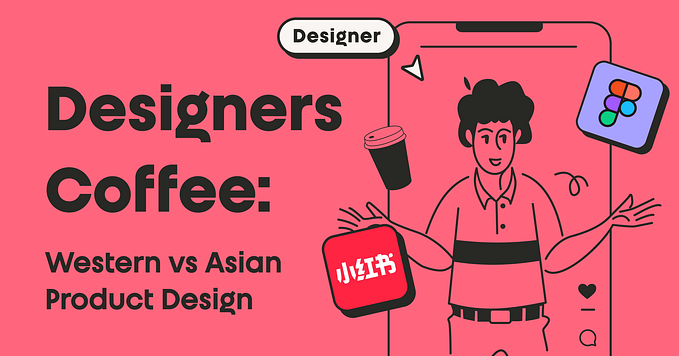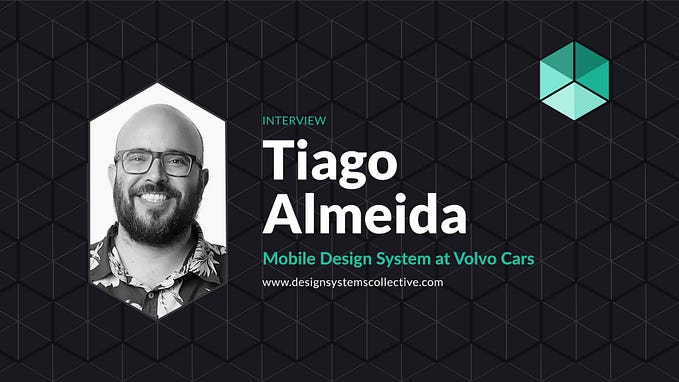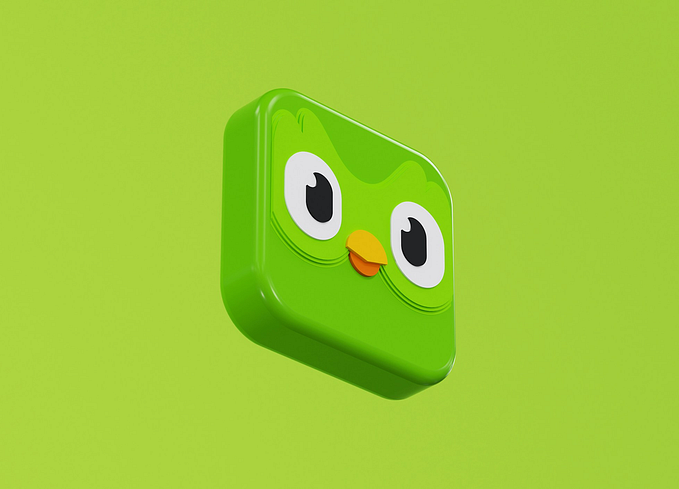How to design for global accessibility
Advancing accessibility through inclusive design
Remember playing that cool game as a kid that you wanted to share with your friend? Or discovering a helpful, new app that you thought they should use? Most of the time, people are able to enjoy the same experiences with their friends and family.
However, this is not the case for everyone. In fact, around 15% of the world population lives with some form of permanent disability. These people require some sort of assistance using everyday products, including their mobile phones.
In 2019, a study was conducted to analyze the status of accessibility in mobile (Android) apps. The results found that the majority of all apps violated some sort of accessibility standard. In a perfect world, people shouldn’t be excluded because of their disabilities. but this is far from the reality that we live in.
What is accessibility?
As designers, we often hear about accessibility and inclusive design, but may not be completely sure what that means. To the average designer, accessibility means ensuring enough colour contrast in their designs. Perhaps, maintaining a minimum tappable area for interactive elements on mobile UIs. Although both are true, this demonstrates an understanding of accessibility that is too narrow.
Accessibility means giving everyone, regardless of their abilities, equal access and means of being productive. It is simply being inclusive of all people.
Americans with Disabilities Act
You may have heard of the ADA Standards for Accessible Design, which are a set of regulations published by The Department of Justice to enforce accessibility standards across all designs. These standards outline the minimum requirements that designers need to meet in order to comply, yet very few go above and beyond to exceed these standards. Many designers consider ADA regulations to be an inconvenience or a non-priority, which often leads to a poor experience for many users.
Inclusive design includes everyone
Designing products and services with a “majority mindset” inherently diminishes the experience for the majority of users. Disabilities that are often overlooked include temporary and situational ones. The reality is that anyone can experience an unforeseen temporary or situational disability.

Microsoft’s Inclusive Design does a great job communicating possible disabilities that one could encounter. When most people think of disabilities, common ones include blindness and hearing loss. Not many instinctively think of temporary or situational disabilities, which occur a lot more often than people think.
How many times have you missed a phone call in a loud environment because you didn’t hear it ring? The vibrate feature on your phone was built to accommodate situations where you might not hear the ring.
Smartphones have developed features such as predictive text, swipe typing and speech recognition to make texting easier and quicker. Modern cars have installed cameras and sensors to alert drivers of other vehicles in their blindspots. Technology is constantly changing to improve the way humans adapt to temporary and situational disabilities in uncertain environments.
Why should we care?
It should be our goal as designers to create equal opportunities for all people to enjoy the same experiences. All design should be inclusive design. As we learn more about our users and how they use our products and services, we can continue to accommodate the range of abilities that they have and assistive tools that they use.
Inclusive design is better for business
Designing for inclusivity ultimately widens your potential customer base. By creating products and services that can be used and enjoyed by everyone, it creates more opportunities for customer acquisition and retention.
Inclusive design is cost effective
An important factor to consider for your business is the legal consequences that you may face for creating inaccessible products and services. A well-known example is the class-action lawsuit filed against Target Corporation due to their online site, Target.com, discriminating against people who are blind.
The retail giant was sued by the National Federation for the Blind (NFB) in 2006 for complaints of an inaccessible retail site. Their main argument was the inability for people with blindness to access content due to lack of alt tags for images on the site. Alt tags aid screen reader users in identifying the content of images on a web page, so without these tags, users with visual impairments were not able to identify what items were being displayed on the website.

Target ended up settling for $6 million for those that were denied equal access to their products and agreed to make their website accessible to people with visual disabilities, among other requirements. The NFB had later declared Target’s updated site to be “equally usable by blind and sighted users”, although there are still some improvements that could be made to its overall accessibility and usability.
The lesson in this case is that the overall amount of time and resources that it would take to design for accessibility from the beginning is much more cost effective than facing legal action due to neglect.
Inclusive design is the right thing to do
Just as physical stores must be accessible to the public, the same goes for online stores. It is required by the law, but that shouldn’t be your only motivating factor. Inclusive design is the right thing to do because it contributes to creating an optimal user experience. The design decisions that we make could potentially help someone accomplish something that they have never been able to do before.
As designers, accessible design shouldn’t even be something you have to think about. It’s part of how you breathe. If design is responsible for the user experience and that’s what we’re accountable for, then we need to be thinking about that upfront.
— Denise Burton, IBM Design Principal
What can we do?
Design thinking requires empathy. As we build a baseline understanding of the pain points for people with disabilities, we can use these observations to inform our design decisions earlier on in the product life cycle.
It starts with the user
We can start by including people with disabilities in our user research sessions to understand their unique frustrations about the problem that we’re trying to solve. By considering accessibility from the start of the product cycle, it can help us create inclusive personas.
When we think about our typical user’s needs and challenges, we may be excluding important information, such as:
- Spectrums of disabilities (blindness and low vision, deafness and hearing loss, motor impairment),
- Types of Assistive Technologies used by people with these disabilities (JAWS Screen Reader, Braille displays, hearing aids),
- Prevalence of each disability in your target market, and
- Impact of your product or service on each disability (ie. How would a video streaming platform impact the experience of a deaf person?)
By including this information into our personas, we can refer back to them throughout the design process and remind ourselves to build accessibility into our products and services in order to meet the requirements of all our users.
It continues with design
There is a ton of information out there on accessibility and inclusive design, but where do we start? The Web Content Accessibility Guidelines (WCAG) set the standards for creating accessible content to a wider range of people with disabilities.
These guidelines address accessibility of web content on desktops, laptops, tablets, and mobile devices. Following these guidelines will also often make Web content more usable to users in general.
Admittedly, checking your designs against every single item in the WCAG’s long list of guidelines may seem like a chore. Luckily, they have organized the list under four principles that provide the foundation for the accessible web.
- Perceivable — Content must be presentable in different ways, including by assistive technologies, so that anyone can consume the same information with at least one of their senses. This includes providing captions or alt text for non-text content such as images and videos.
- Operable — User interfaces must be operable, including by assistive technologies, without requiring the user to put in significant amount of extra effort to complete the same task. This includes ensuring all functions are keyboard accessible, focus indicators are apparent and form fields are correctly labeled.
- Understandable — Users must be able to read the information on a page. This includes allowing users to resize text or using fonts that are readable and not too small (usually around 16px is a good place to start). Users must also be able to understand the operation of the interface. This includes following web and mobile best practices to make content behave in an expected manner.
- Robust — Content must be well-formed to maximize compatibility across user agents, including assistive technologies. This includes ensuring any markup language used to create the content is valid, and the name and role of components (such as form fields, buttons or links) are programmatically determined. For scripting custom components, use WAI-ARIA roles to make sure your controls will be recognized and function properly by assistive technologies.
It ends with the user
When you begin testing your designs, it can be useful to run sessions with people with accessibility needs. Not only will you gain valuable feedback in terms of accessibility requirements you may have missed, you will also observe similarities amongst many of your sponsor users, regardless of their capabilities.
Final thoughts
As humans, we should learn to celebrate our diversity and recognize that we are not all the same. Through inclusive design, we can create experiences that are usable, flexible and accessible to provide equal opportunities for all.
We should all … understand how each of us is an individual and is unique, but also focus on what is universally important to all of us. That way, we can increase access, reduce friction, create a more emotional connection — in literally whatever you design.
— Tim Allen, VP Design at Airbnb
Thanks for reading!
Be sure to SUBSCRIBE to never miss another article on UX design, career tips, life lessons, and more!
Here are a few more to read next:







